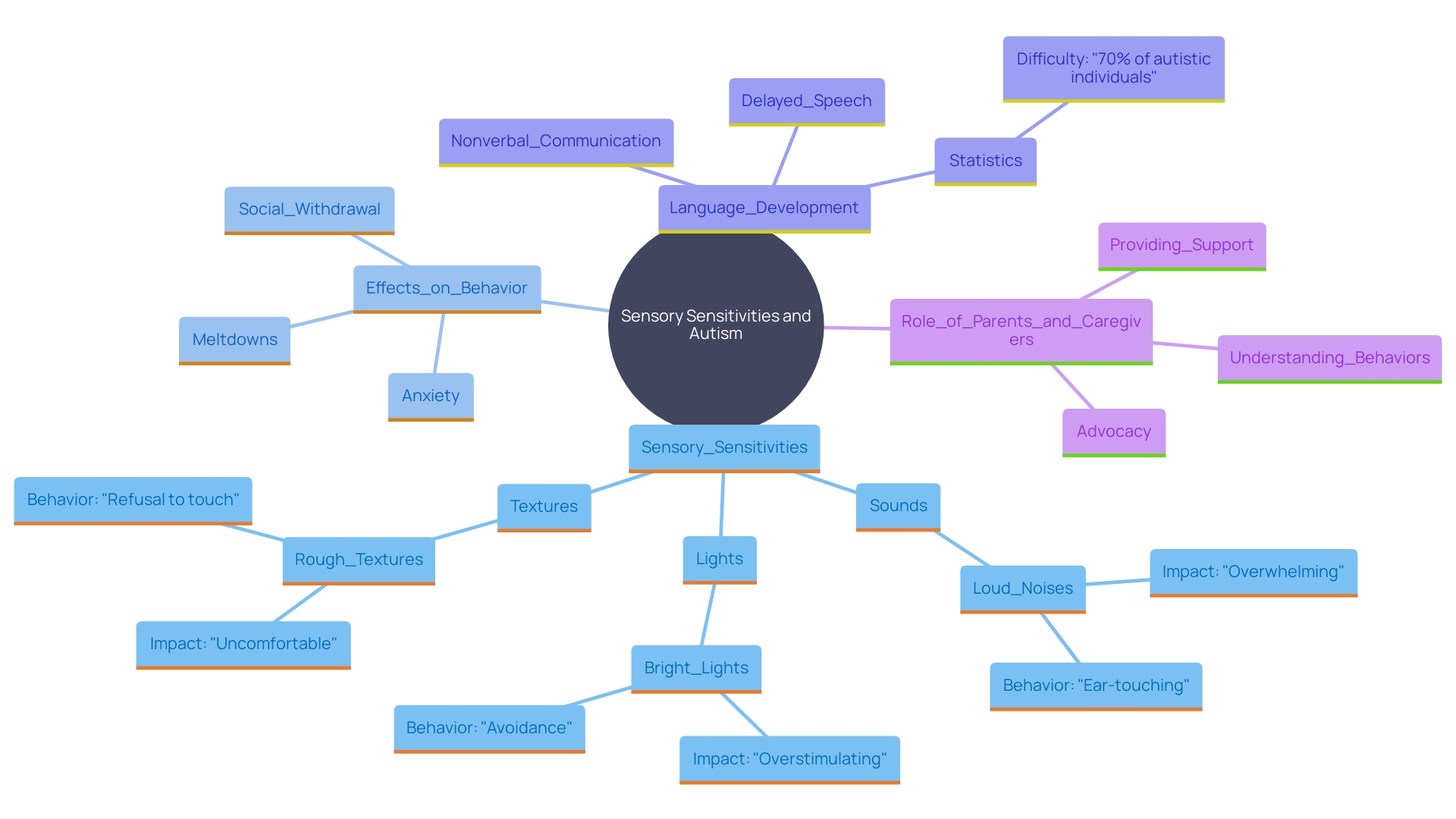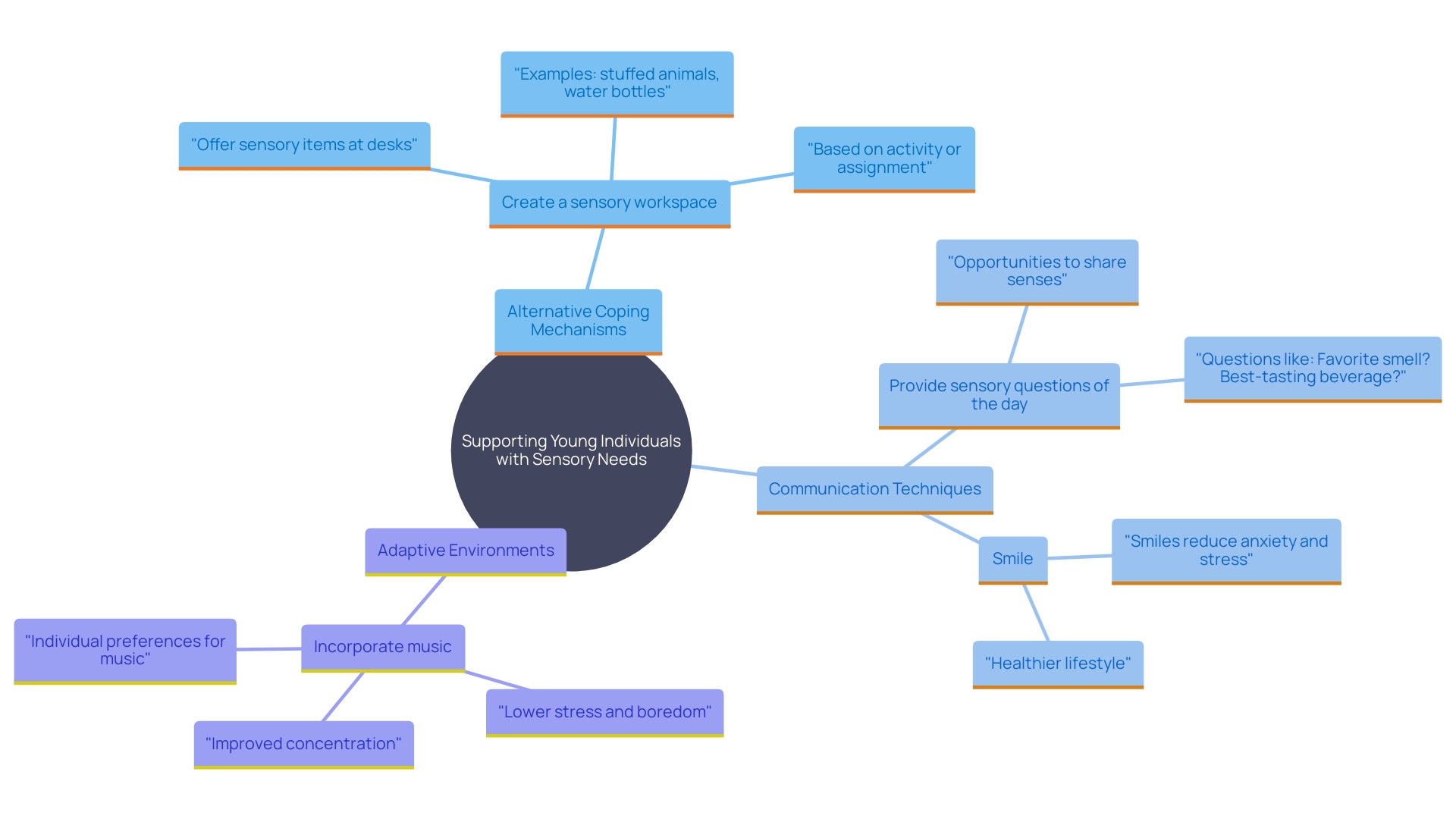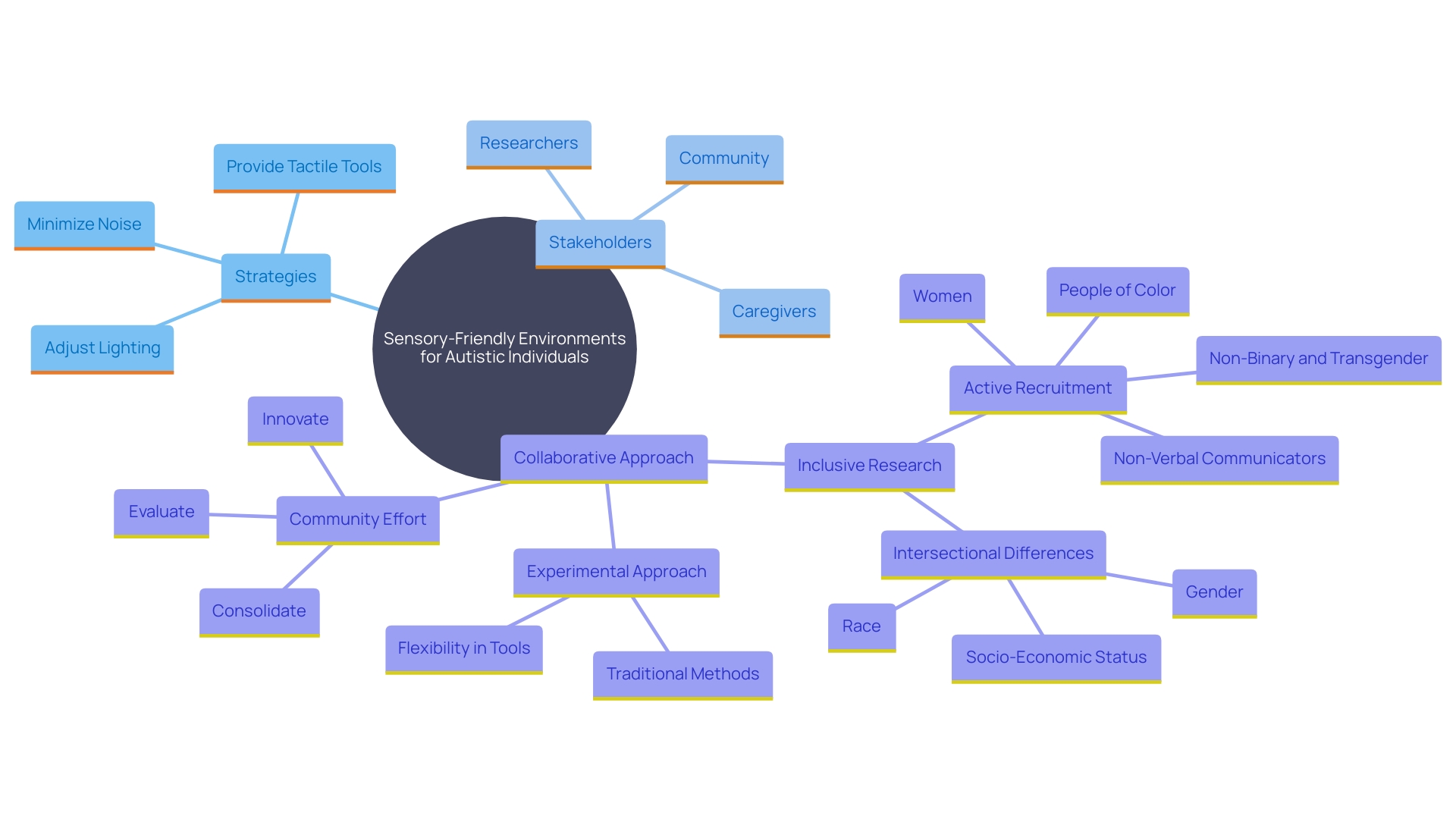Introduction
Sensory sensitivities often play a significant role in the lives of individuals with autism, presenting unique challenges that can manifest in various behaviors, such as frequently touching their ears. Understanding these sensory experiences is crucial for parents and caregivers, as it provides valuable insights into the motivations behind such behaviors. Recognizing how children with autism process sensory stimuli—whether it's sounds, lights, or textures—allows for the development of effective strategies to support their well-being.
This article delves into the reasons behind ear-touching, identifies common triggers, and offers practical approaches to manage these sensitivities. By exploring the role of occupational therapy and the importance of creating sensory-friendly environments, parents and caregivers can empower their children, ensuring they feel understood and supported in navigating their sensory world.
Understanding Sensory Sensitivities in Autism
Sensory sensitivities are a common aspect of autism, often appearing in actions such as ear-touching. These sensitivities arise from the unique ways individuals with autism process external stimuli, which include sounds, lights, and textures. Identifying these perceptual experiences is essential as it assists parents and caregivers in comprehending the motivations behind particular behaviors. Research has indicated that individuals with autism may display heightened or reduced reactions to environmental input, responding intensely to stimuli such as loud sounds or bright lights. For instance, understanding how early responses to sounds and auditory processing can affect language development is crucial. Research highlights that about 25% of individuals with autism experience considerable language difficulties, partly due to processing disorders. By concentrating on these perceptual experiences from the viewpoint of autistic children and young individuals, parents and caregivers can better assist their needs and encourage a more comfortable atmosphere for them.

Why Do Individuals with Autism Touch Their Ears?
Touching ears can be a self-soothing behavior or a reaction to overwhelming stimuli for individuals with autism. This action might offer comfort by helping them manage overwhelming sensory experiences. Overstimulation can be particularly distressing, especially in environments where emotions run high or when confronted with unfamiliar textures and tastes. Understanding a child's specific triggers and effective calming techniques is crucial since each child responds differently. This behavior also enables people to explore their bodies and understand their surroundings, which is a crucial aspect of their development and interaction with the world. Identifying and managing these perceptual experiences can significantly enhance their well-being and quality of life.
Common Triggers for Ear Touching in Autism
Contacting ears in people with autism can be initiated by a range of experiences. Loud sounds, intense illumination, and packed settings frequently lead to overwhelming sensations, prompting this response. Understanding these triggers is crucial for parents and caregivers. By identifying the specific environmental factors that cause distress, they can develop strategies to minimize exposure to overwhelming situations. For instance, avoiding noisy places or using noise-canceling headphones can help manage auditory sensitivities. Similarly, reducing exposure to bright lights or providing a quiet space can alleviate visual overstimulation. Acknowledging and tackling these perceptual challenges can significantly enhance the quality of life for autistic individuals.
Managing Sensory Sensitivities and Ear Touching
Handling sensitivity to stimuli and the actions related to ear touching requires creating plans customized to the individual's specific requirements. Developing a stimulation plan, setting up soothing routines, and utilizing tools can greatly lessen anxiety and offer reassurance. Evidence indicates that perceptual activities and therapies can aid youngsters with various challenges, including difficulties transitioning between situations. Occupational therapists like Alison Neal and Jignasha Button emphasize the significance of personalized integration therapy, which can be applied both at home and school. They work with families to find practical solutions that address everyday problems effectively. Furthermore, comprehending each individual's sensory preferences and modifying their surroundings accordingly aids in respecting diverse needs and managing limits within the family. This approach promotes growth, learning, and essential skills development, ensuring every family member can thrive.
Strategies for Supporting Children with Autism Who Touch Their Ears
Supporting young individuals who frequently touch their ears involves providing alternative coping mechanisms and teaching self-regulation skills. Parents can introduce calming techniques such as deep pressure activities, fidget toys, or quiet spaces where the young one can retreat when feeling overwhelmed. Encouraging open communication about feelings and sensations can also empower young individuals to express their needs.
Evidence shows that early developmental interventions can significantly improve social communication in interactions with caregivers, addressing core challenges associated with autism. For instance, approximately 165 community-based early intervention practitioners are trained to support parent learning, ensuring toddlers with early signs of autism have greater access to developmentally appropriate, family-empowering interventions. These interventions concentrate on perceptual differences, which can profoundly influence behavior, development, and learning.
Establishing a stimulating adaptive environment, such as a specific area with diverse sensory zones, can also offer youngsters with autism a place to address their perceptual requirements. For instance, spaces with rocking chairs and bean bags can assist youngsters who require relaxation, while engaging activities can provide the stimulation that some may desire. As Dr. Patricia Muller, Director of the Center for Evaluation, Policy, and Research, emphasizes, these tailored approaches support both the young individual and family by addressing unique needs.
By implementing these strategies, parents can create an atmosphere where their offspring feels understood and supported, thus improving their capacity to manage challenges related to sensory perception and flourish in spite of them.

The Role of Occupational Therapy and Sensory Integration
Occupational therapy plays a vital role in addressing perceptual issues related to ear touching in autistic youngsters. By employing integration techniques, therapists assist children in better processing and responding to stimuli. These strategies are essential for managing sensitivities, which can significantly reduce ear-touching behaviors. For example, Alison Neal, Director of Midlands Occupational Therapy and an advanced practitioner in integration therapy, highlights that minor adjustments in the setting or routine can create a notable impact. She works closely with families to identify the specific triggers and calming methods that are effective for each child. This approach is supported by the experiences of many families and therapists who have seen positive outcomes through tailored interventions. It's important to understand that perception processing differences can impact behavior and learning, and occupational therapy provides practical solutions to these challenges.
Creating a Sensory-Friendly Environment
Establishing a sensory-friendly atmosphere is essential for assisting people with autism. This involves minimizing loud noises, incorporating soft lighting, and providing a variety of tactile tools both at home and in public spaces. Such adjustments can significantly improve the comfort and safety of autistic people, potentially decreasing behaviors like ear-touching that may result from overwhelming stimuli.
An environment that accommodates the distinct perception processing requirements of individuals with autism. For instance, in North Macedonia, where autistic children attend mainstream classrooms, overwhelming stimuli can be a significant barrier. These classrooms often present challenges due to the perceptual differences experienced by autistic students, including hypersensitivity to certain stimuli.
Research highlights the importance of creating inclusive spaces that cater to neurodiverse needs. The Honickman Center in Philadelphia is an excellent example of a facility designed with consideration for sensitivity in mind. With special design features aimed at calming visitors, it demonstrates how thoughtful environmental modifications can make a substantial difference.
Dr. Wendy Ross, Director of Jefferson's Center for Autism and Neurodiversity, emphasizes the importance of such accommodations. She observes that establishing a feeling of safety and security through environmental changes is essential for people with sensory sensitivities.
Involving stakeholders, including parents and teachers, in the design and implementation of sensory-friendly spaces can lead to more effective and tailored interventions. This collaborative approach ensures that the needs and preferences of neurodivergent individuals are respected and addressed, promoting a more inclusive and supportive environment.

Conclusion
Understanding and addressing sensory sensitivities in individuals with autism is essential for promoting their well-being. The behaviors, such as ear-touching, often serve as coping mechanisms in response to overwhelming sensory stimuli. Recognizing the unique ways in which children with autism process sensory information allows parents and caregivers to develop effective strategies tailored to their specific needs.
Identifying common triggers for sensory overload is crucial in creating supportive environments. By minimizing exposure to distressing stimuli and implementing calming techniques, caregivers can significantly enhance the quality of life for autistic individuals. The importance of occupational therapy in this process cannot be overstated, as it equips families with practical tools and strategies to manage sensory challenges effectively.
Ultimately, fostering a sensory-friendly environment and utilizing individualized approaches empowers children with autism to navigate their sensory experiences with greater ease. By embracing these strategies, parents and caregivers play a vital role in helping their children feel understood and supported, paving the way for their growth and development in a world that can often be overwhelming.




